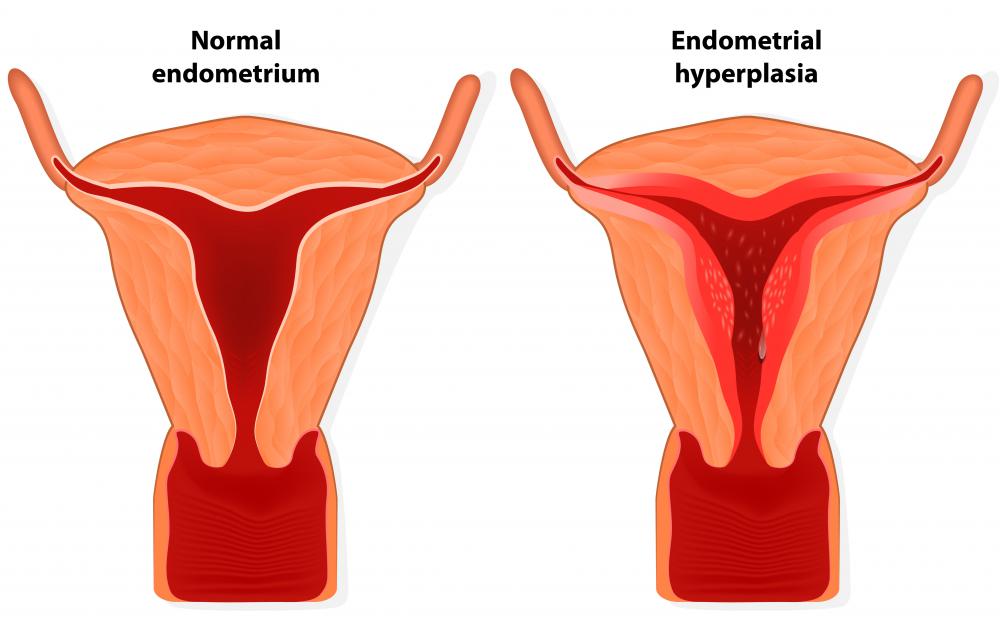At WiseGEEK, we're committed to delivering accurate, trustworthy information. Our expert-authored content is rigorously fact-checked and sourced from credible authorities. Discover how we uphold the highest standards in providing you with reliable knowledge.
What Are the Different Types of Hyperplasia?
Hyperplasia is a condition that is characterized by an overgrowth of cells and that affects normal tissues and organs. This proliferation in cells might progress to cancer. The different types of this condition are endometrial, adrenal, parathyroid and prostatic. Hyperplasia is classified as simple; complex; simple with atypia, meaning cell abnormality; or complex with atypia.
Simple hyperplasia without atypia is the least dangerous form of this condition. This occurs when there is an overgrowth of cells, but the basic structure remains unchanged. In the complex form without atypia, the cell proliferation is more complex, but its internal make-up remains normal. Both instances present the lowest likelihood of cancer development.

A less common form is classified as simple with atypia. This form often responds to hormone therapy. If the condition is classified as complex with atypia, there is up to about a 30 percent chance for cancer development. A doctor might recommend surgical removal in this instance.
The adrenal glands are located atop the kidneys and produce various hormones, including cortisol and adrenaline. Initially, the overgrowth of cells observed in adrenal hyperplasia results in excess adrenal hormone secretion. As the condition progresses, it typically results in an inability of the adrenal glands to produce enough hormones. A doctor often will prescribe cortisol replacement under this circumstance. Sometimes aldosterone, a sodium-regulating hormone, is also prescribed.

Endometrial hyperplasia affects the inner lining of the uterus in women. Hormonal imbalances can contribute to the development of this condition. Most of the time, it is non-cancerous and easy to treat. A doctor generally will recommend hormone therapy and monitor the condition to reduce cancer risk. In rare circumstances, it can progress to uterine cancer.

There are four parathyroid glands located in the neck that secrete calcium-regulating hormones. Hyperplasia causes an enlargement of these glands, resulting in increased calcium levels. A doctor will order tests to determine calcium levels and observe the amount of calcium that is being excreted from the body. Surgery to remove three of the four parathyroid glands is the preferred treatment method. Elevated calcium levels persist after surgery in about 20 percent of patients.

As men age, the prostate gland slowly becomes enlarged. This is known as benign prostatic hyperplasia and generally does not cause problems until after age 40. Prostate enlargement causes the gland to press against the urethra, irritating the bladder and causing frequent urination. The cause is not completely understood, but decreased levels of the hormone testosterone are thought to be a factor. A doctor might prescribe medication designed to shrink the prostate or recommend minimally invasive surgery.
AS FEATURED ON:
AS FEATURED ON:















Discussion Comments
I had a parathyroid removed because of a tumor(non malignant). Now I have a uterine lining thicker than it's supposed to be. Would that possibly be due to the parathyroid problem? I was told it will take some months for my body to return to normal. What kind of doctor would even relate to all this interaction of parathyroid, calcium levels, and hyperplasia?
Post your comments